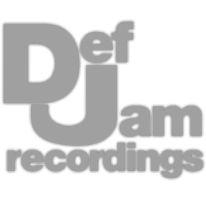Professional Analog Mastering.
Professional Analog Mastering.










When mixing or processing a kick drum be sure to pick the right compressor - typically ones with faster settings will work well, especially if they emphasize transients with mild distortion. If you want to bring forward the kick’s details, try some form of maximization or upward compression.
When EQing a kick, I like to find different important frequencies and conceptualize them as the Sub, the heartbeat, the thump, knock, snap, and click. Although this probably seems a little dumb, each region that I’m showing here really does sound like their name when they’re isolated.
To find them, start by finding the fundamental or lowest note - this is the sub. The next strongest spike is typically the heartbeat. From there, harmonics of the kick’s fundamental make up the other 4 regions. This way I can quickly identify what I want more or less of, and then amplify or attenuate these bands accordingly.
Let’s take a listen to these different regions, and let me know in the comments if you think they sound like the names I’ve given them here.
When trying to find a compressor for your kick there are 2 that I’d recommend - the first is an 1176 or 1176 emulation. The quick attack and release settings cause the transient of the kick to be distorted, resulting in a punchy and aggressive sound.
Next, I’d recommend a dbx 165a compressor or an emulation. Try a 4:1 ratio, auto attack, and release, and engage the limiter. This creates a cool pumping sound that I think works well on the kick.
Let’s take a listen to both.
Some compressors really do not work well on kick - for example, this emulation of an RCA broadcast compressor either ruins the kick’s transient or compresses for so long it’s as if it’s just lowered the volume. Another compressor to avoid would be an optical compressor.
Again it’s just too slow to work well on a kick. Let’s listen to both and let me know if you’re hearing the same issues that I’m hearing.
This Shaperbox plugin from Cableguys has given me some cool ideas when saturating - first I chose the drive function, then I introduces saturation via the drive slider, and introduced some wave shaping at lower amplitudes as well. Then I isolated the saturation to areas above my kick’s sub.
At the bottom, I selected Audio, which triggers the distortion only when audio passes a threshold - which I could control more in the global trigger window.
Lastly, I thought it was awesome that I could shift the trigger, meaning the distortion would begin later in the kick - so if I wanted a couple of milliseconds of the kick to be unaffected, I could trigger distortion later.
It resulted in a cool sound, so let’s take a listen.
This next sound is a little easier to achieve but sounds great nonetheless - with the inflator, I’ll increase both the effect amount and the curve to their maximum levels, and reduce I’ll the input to compensate for gain changes. The high curve creates a super warm, low-frequency dense sound.
In short, it creates this massive kick sound in which quieter parts of the low-frequency range are brought to the front.
Let’s take a listen to how it sounds.
Somewhat similar to last chapter, we can use this upward compressor to bring forward quieter details of the kick, but unlike last chapter, all of the quieter details will be amplified, not mainly the low frequencies. I find this works great at amplifying the kick skin’s vibration.
It’s still a little subtle, but if you listen you can hear the wobble of the drum skin after the initial hit. That said, try this plugin, or a similar one if you want to amplify some of the more organic aspects of the kick.
If we distort and degrade a kick with the right types of processing, we can generate tones and harmonics that give the kick a much more unique sound. With this Lifeline Expanse plugin by Excite Audio, I first introduced fuzz distortion mainly on low frequencies.
I used some very subtle re-amping to give a distinct character and then introduced bit and sample rate reduction to generate tones on the kick’s sustain.
Lastly, I used this mono function to center the effect, making it more suitable for a kick, since we typically want this centered.
Let’s take a listen to how unique distortion and signal degradation can give us a really interesting tone.
If we reverberate frequencies around the kick’s click, we can emphasize them in a mix - I started with this preset, but change things to better suit this kick. With what we discussed in chapter 1 in mind, I’ll center the reflections around the harmonic responsible for the click sound.
A shorter time works best, as does an emphasis on bright reflections with no modulation.
Let’s take a listen and notice how the click is enhanced.
Similar to last chapter, we can use reverb to emphasize the kick’s sustain - this time by isolating reflections to lower frequencies and increasing the decay of the sub to heartbeat regions. This time lots of modulation helps since it mimics the wobble of the kick skin.
We’ll make the time a little longer and emphasize later reflections.
Let’s take a listen to how the kick’s sustain is increased a lot by this reverb.
Clipping can be useful on a click if you want to add some mid to high-frequency distortion. If we use this free clip plugin and perform a null test with a phase-inverted version of the original kick, we can hear what’s being added to the processor.
As we switch between the different clip types, we’ll notice that the distortion becomes lower in pitch and that it distorts for a longer amount of time.
Let’s take a listen to the null test, and I hope this helps the next time you add clipping to a kick.